
views
Treating a Stress Fracture
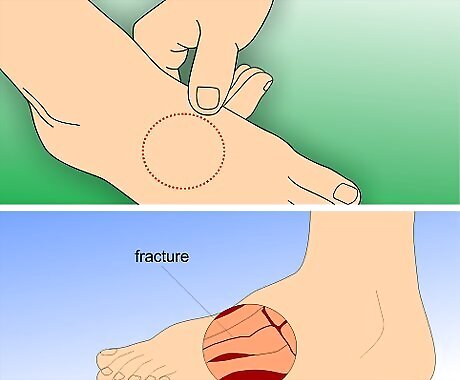
Recognize the symptoms of a stress fracture in your foot. The first sign of a stress fracture may be a slight discomfort towards the front of the foot. This is the part of the foot that often takes the brunt of stress during repetitive activities. Over time, you may notice other symptoms, such as swelling of the foot or ankle, tenderness to the touch at the injury site, and sometimes bruising. Many times, pain from stress fractures is very slight, and you may only feel it during long periods of exercise, running, or working out. As soon as you stop your activity, the pain may vanish. For this reason, you may not immediately suspect a fracture.
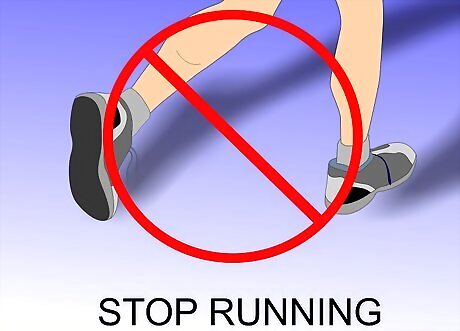
Stop exercising if you notice stress fracture symptoms. As soon as you notice pain in your foot, stop whatever you were doing when the symptoms started. If the pain goes away as soon as you stop using your foot and returns when you resume your activities, you may have a stress fracture.
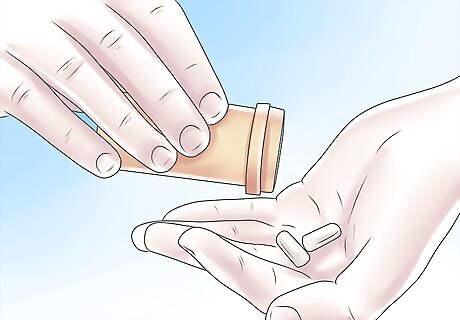
Avoid taking painkillers, if you can. Common over-the-counter painkillers, especially NSAIDs (non-steroidal anti-inflammatory drugs) such as ibuprofen (Motrin) and naproxen (Aleve), may delay bone healing. Acetaminophen (Tylenol) may also disrupt healing. If you can, manage your pain with other methods (such as ice packs or light compression), unless your doctor recommends otherwise.
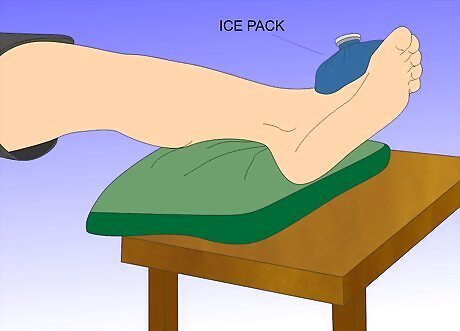
Treat the area with the RICE method. When you have a stress fracture, appropriate first aid can help minimize inflammation and prevent further injury. The most effective form of first aid for a stress fracture is the RICE protocol, which stands for rest, ice, compression, and elevation. Immediately after you are injured and while you are waiting to get medical care, do the following: Rest your injured foot as much as possible. If you must walk around or put weight on your foot, wear a supportive shoe with a thick sole. Ice your foot. Apply an ice pack to the injured area for 20 minutes at a time, with 20-minute breaks in between. Wrap the ice in cloth to protect your skin. Compress the area gently with a soft, loosely-wrapped bandage. Elevate your foot, keeping it above the level of your heart. Try lying down on a couch with your foot propped up on the armrest, or lying in bed with your foot propped on a couple of pillows.

See your physician right away. If you have symptoms of a stress fracture, schedule an appointment with your doctor as soon as possible. Since stress fractures often do not show up on X-rays, your doctor may order other types of imaging tests, such as an MRI or nuclear bone scan. You will likely be prescribed a walking boot or crutches to help minimize stress on the fractured bone while it heals.

Get some rest. Continue to follow your doctor's advice about wearing the boot or using the crutches. It is imperative for proper healing to keep weight and force off the injured foot. Keep your feet up as much as possible and make sure to get adequate sleep. Most healing takes place when you are sleeping, and there is extra energy from the lack of use of other body functions.
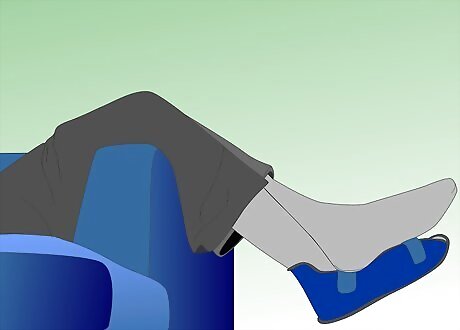
Refrain from exercise that impacts your feet for 6-8 weeks. Healing a foot stress fracture is not a quick process by any means. The longer you can stay off your feet, however, the faster the fracture will heal. Don't even think about running or playing ball or exercising until it is completely healed. Depending on their severity, some stress fractures take longer to heal than others. Follow your doctor’s advice about when you can safely start exercising again without reinjuring the fracture and delaying the healing process.

Focus on exercising other parts of your body while your foot heals. You may not need to give up on exercise altogether while your fracture is healing. Talk to your doctor or a physical therapist about doing low-impact exercises (e.g., swimming), or strength training that focuses on your upper body.
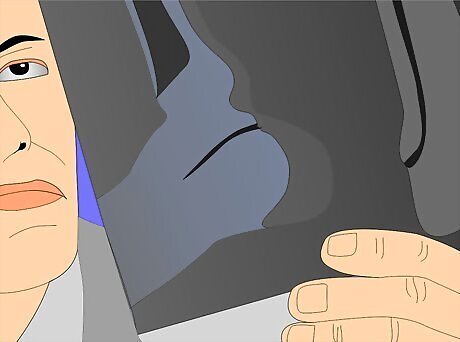
Follow up with your doctor to make sure the fracture has healed. You will need to schedule at least 1 follow-up visit with your doctor. They may want to X-ray your foot once more to confirm it has fully healed before you return to your normal exercise routine. X-rays taken later in the healing process can sometimes reveal fractures that were not visible immediately after the injury. This is because a callus forms on the bone during the healing process, creating a thickened area at the site of the fracture.
Preventing Stress Fractures

Assess your risk of developing stress fractures. Some people are more likely than others to get stress fractures due to occupation, lifestyle, or health factors. People who experience repetitive stress on their feet, such as runners, dancers, or athletes, are at especially high risk. People with health conditions that decrease bone density, such as osteoporosis or vitamin D deficiency, are also at risk. If you’ve had a stress fracture before, you’re at greater risk of developing another one. Women are more likely to develop stress fractures than men, especially if they experience abnormal or irregular menstrual periods. Long-term use of certain medications, including glucocorticoids (a type of steroid), many hormonal medications, and some cancer drugs, can affect bone density. Ask your doctor if any of your current medications put you at risk.

Be careful when you exercise. Stress fractures are a common occurrence for people with intense exercise routines. Doctors therefore recommend never increasing the intensity of your workout by more than 10% per week. Take these precautions to minimize your risk of stress fractures: Warm up and stretch thoroughly before you exercise. Take frequent breaks to give your body and bones a break. If you feel uncomfortable or experience pain during exercise, stop immediately. Use good, well-maintained exercise equipment to help prevent stress fractures. Stress fractures may occur when your equipment forces you to adopt improper technique. Incorporate strength training into your workout routine to build bone mass and strengthen the muscles in your feet and ankles.
Talk to your doctor about adjusting your diet. Dietary deficiencies can make your bones weaker and more susceptible to stress fractures. Make an appointment with your doctor or a registered dietitian for advice on changing your diet or incorporating dietary supplements. A diet rich in calcium and vitamin D can help improve bone density and prevent stress fractures.



















Comments
0 comment